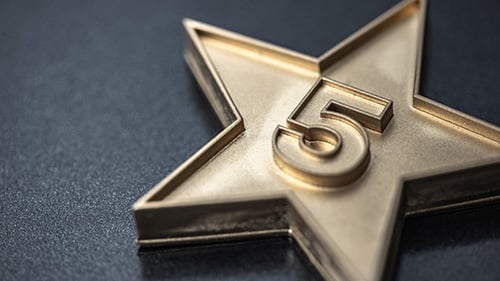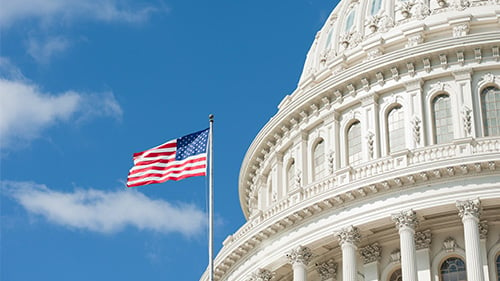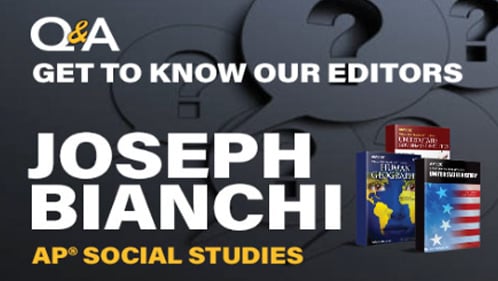Teaching the APUSH Long Essay Question
The Long Essay Question (LEQ) on the AP U.S. History exam offers students an opportunity to construct a sophisticated historical argument, supported...
AP & Honors Mathematics
Explore Wiley titles to support both AP and Honors mathematics instruction.
Literacy Skills & Intensive Reading
Connections: Reading – Grades 6–12
Empower student success with a proven intensive reading program that develops strong reading skills in striving readers.
Drama, Speech & Debate
Basic Drama Projects 10th Edition
Build students’ confidence and competence with comprehensive, project-based theatre instruction.
Literature
Connections: Literature
Support learners as they study dynamic, relevant texts and bring the richness of diverse voices to students through literature.
Literature & Thought
Develop critical thinking, reading, and writing across literacy themes, genres, historical eras, and current events.
Language Arts
Vocabu-Lit® – Grades 6–12
Help students build word power using high-quality contemporary and classic literature, nonfiction, essays, and more.
Connections: Writing & Language
Help students develop grammar, usage, mechanics, vocabulary, spelling, and writing and editing skills.
Reading/English Language Arts
Measuring Up to the English Language Arts Standards
Incorporate standards-driven teaching strategies to complement your ELA curriculum.
English Language Learners
Measuring Up for English Language Learners
Incorporate research-based best practices for ELLs with an approach that includes a focus on language acquisition strategies.
Mathematics
Measuring Up to the Mathematics Standards
Incorporate standards-driven teaching strategies to complement your mathematics curriculum.
Foundations
Measuring Up Foundations
Help students master foundational math skills that are critical for students to find academic success.
Science
Measuring Up to the Next Generation Science Standards
Give students comprehensive NGSS coverage while targeting instruction and providing rigorous standards practice.
Assessment
Measuring Up Live
Deliver innovative assessment and practice technology designed to offer data-driven instructional support.
For a better website experience, please confirm you are in:
6 min read
John Irish Apr 8, 2025 7:45:00 AM

One of the things that I spent most of my time thinking about, when the redesigned AP U.S. History course went into effect, was how to deal with the new Short Answer Questions. These were new, we had never seen these before, so how would we approach them and how would I teach them to my students.
Let’s start with a strategy that I use with my students in approaching these questions: it is called RIDE and that stands for: Restate the question/prompt, Identify a proper noun, Describe/Define that proper noun, Explain the connection of the proper noun back to the question/prompt. There other strategies out there, there is no single best approach, but I have found that this works best with my students and what I want them to accomplish with these particular questions.
Now let’s take a look at the first SAQ question type we will encounter on the exam, which, for many students, is the most challenging.
What we say about the AP U.S. History exam is also true about the other two AP History exams: Modern World and European (for the most part, I will explain the slight differences between the three exams as we look at each question type). There are four short-answer questions on each exam, and you will answer three of them. Each question will have three score points that you are trying to achieve. So your total score from the SAQs on your AP exam will be from 0-9 points.
Question 1 will assess the skill of historical interpretation and argumentation. For the U.S. History exam, this will be in the form of two paired secondary passages (not primary sources) from historians who offer competing arguments on some similar aspect within U.S. History. You might have one historian who argues that the American Revolution was primarily about political issues, but then that passage will be paired with a different historian who argues that the American Revolution was more about economic issues. Then your job is to make sense of these two competing arguments. Your first task will be to come up with a quick summary of the differences between the two historians' arguments. I always tell my students to do a few things with the passages, to help them get to the answer to Question #1. First, try and identify the main point or the thesis of each of the passages (this can be a sentence, or two, or even a phrase), and underline that for each passage. Second, turn to a partner (obviously, we don’t do this on the exam, but this is in class when we are practicing) and see if you can explain the gist of the thesis or argument without looking at the passage. Third, try and rewrite the thesis or argument by putting it in your own words. Once you have done that and feel confident that you have them down, just write what you have from your own words. This question tends to be the lower bar from the question set.
The second and third tasks from Question #1 will be the exact same thing: identify ONE piece of evidence, not explicitly mentioned in the passages (and during the time frame provided), which can be used to support the argument of the historian. This is a challenging task to accomplish because it not only requires you to understand the argument of the historians (which can be difficult in itself), but also to apply that knowledge and argument to something else that you know from your U.S. History course.
Let’s practice this and see what it might look like.
Here are two paired passages on Columbus:
The Columbian discovery was of greater magnitude than any other discovery or invention in human history. Europeans realized that in the sixteenth century. In the centuries since then, the importance of Columbus’s discovery has continued to swell, both because of the prodigious development of the New World and because of the numerous other discoveries that have stemmed from it. It was after Columbus’s voyages that the task of integrating the American continents into Greco-Roman-Christian-European-culture was carried out. Notwithstanding errors, egoism, and unheard-of violence, the discovery was an essential, in many ways, determining, factor in ushering in the modern age. It was brought about first and above all by the Spanish and then by the Portuguese, French, English, Italians, Irish—to some extent by all the peoples of Europe. But this recognition cannot diminish the value of the inception of that task, which was Columbus’s discovery.
—Paolo Emilio Taviani, Columbus, The Great Adventure, 1991
Thus began the history, five hundred years ago, of the European invasion of the Indian settlements of the Americas . . . When we read the history books given to children in the United States, it all starts with heroic adventure—there is no bloodshed—and Columbus Day is a celebration. To emphasize the heroism of Columbus and his successors as navigators and discoverers, and to deemphasize their genocide, is not a technical necessity but an ideological choice. It serves—unwittingly—to justify what was done. . . . The treatment of heroes (Colum- bus) and their victims (the Arawaks)—the quiet acceptance of conquest and murder in the name of progress—is only one aspect of a certain approach to history, in which the past is told from the point of view of government, conquerors, diplomats, leaders . . . Was all this bloodshed and deceit—from Columbus to Cortes, Pizarro, the Puritans—a necessity for the human race to progress from savagery to civilization?
—Howard Zinn, A People’s History of the United States, 1980
Here are the three tasks that go along with this SAQ.
- Briefly describe ONE specific difference between Taviani’s and Zinn’s interpretations of Columbus.
- Briefly explain how ONE specific historical event or development from 1492-1600 that is not explicitly mentioned in the excerpts could be used to support Taviani’s interpretation of Columbus.
- Briefly explain how ONE specific historical event or development from 1492-1600 that is not explicitly mentioned in the excerpts could be used to support Zinn’s interpretation of Columbus.
Let’s take these one at a time. First, A. Remember what I said, you want to try and do three things (e.g., find the thesis of the passage, restate it to a friend, and put it in your own words). Here is what I think are the main thesis points of each of these passages: Taviani—“The Columbian discovery was of greater magnitude than any other discovery or invention in human history... because of the numerous other discoveries that have stemmed from it.” Zinn—“To emphasize the heroism of Columbus and his successors as navigators and discoverers, and to deemphasize their genocide, is not a technical necessity but an ideological choice...Was all this bloodshed and deceit... a necessity for the human race to progress from savagery to civilization?”
The first task asks us to describe a difference between the two, here is just put the gist of their argument in my own words. Which might look something like this (notice I code each part to fit with the RIDE strategy):
One specific difference between Taviani and Zinn’s interpretations (R) is how they view the impact of Columbus’s discovery (I). Taviani sees it as a positive turning point that helped bring progress and connect the world (D). Zinn, on the other hand, focuses on the violence and suffering Columbus caused, especially to Indigenous people (D).
Also, note that there is no (E), that is because the task did not call for an explanation, it simply asked us to describe a difference, so that’s what we have done.
The next two tasks are the same, but switch the historians. Basically, our job is to come up with a specific example, not mentioned in either of the passages, which can be used to support the argument of each of the historians. So for Taviani, we need to come up with an example which supports the idea of Columbus and progress and connecting the world; for Zinn, we need to come up with an example which supports the idea of Columbus and violence and suffering around the world.
For Taviani we might come up with the following examples:
Let’s take a look at what this might look like using the RIDE strategy:
One specific event that supports Taviani’s interpretation of Columbus (R) was the emergence of the Columbian Exchange (I), which was the transfer of crops like maize, potatoes, tomatoes, and cacao (D). These new foods improved European diets and helped increase population growth (E).
You could do the same thing for the Zinn passage.
As you can see following the RIDE strategy is quick and simple, providing you with a clear cut way to approach these types of questions, which have challenged students on the AP Exam.
The World and European History exams are a little different in what they ask you to do, but the RIDE strategy still works the same. Generally here are some of the major differences between the U.S. exam and the Modern World/European History exams: first, they usually have just one historian (they may have multiple passages, but it will normally be from just one historian); second, here are some of the things you are asked to do with the three tasks: identify the thesis/claim (argument) of the author, explain how ONE specific piece of evidence can be used to support the author’s thesis/claim, explain how ONE specific piece of evidence can be used to refute the author’s thesis/claim, use one of the HTS (i.e., causation, comparison, or ccot) to clarify and/or explain something with regard to the information in the passage (e.g., it might ask students to describe an effect of the event described in the passage), explain one strength or weakness of the author’s argument, explain how evidence from the paragraph supports the author’s thesis/claim (arguments).
The great thing about RIDE is that it works with the other types of SAQs that you will face on the AP History exam. Question #2, will ask you to work with a primary source. Then Questions #3/4 (which you have choice on, you select one of these two options), has no sources.
Hopefully you will find this strategy easy to work with and clear, best of luck as you tackle the AP History exams!

The Long Essay Question (LEQ) on the AP U.S. History exam offers students an opportunity to construct a sophisticated historical argument, supported...

It’s the time of year when teachers and students begin their final push towards preparing for the AP Human Geography exam. Teachers and students...

The Supreme Court question on the AP Government exam, a mandatory component, consistently challenges students to demonstrate a nuanced understanding...

The Free-Response Question (FRQ) portion of the Advanced Placement® exam provides test takers with the opportunity to demonstrate their knowledge on...

Let’s face it, poorly answered free response questions are hard on both teachers and students. Most students shudder at the thought of answering the...

With 45 questions in an hour, four answer choices per question, it’s understandable why the multiple-choice section can be intimidating.

Get to know the author of our AP® United States Government & Politics textbook. David Wolfford answers our questions about how he maintains his love...

The test is over! Your students feel much better and relieved now that the exam is over. Score releases are in the distant future. You feel relieved...

Get to know one of our editors, Joseph Bianchi, who specializes in AP® Social Studies. Joe answers our questions about how he carries over his 25...

So, you have taken the plunge and are now teaching AP® Human Geography. People will ask “What is Human Geography?” but you have no idea how to answer...

The AP English exam can feel like a high-stakes challenge for students, and for teachers, preparing students to tackle the multiple-choice section...

The middle of the school year is a unique crossroads for AP Social Studies teachers. The initial enthusiasm of fall has faded, the intensity of...
